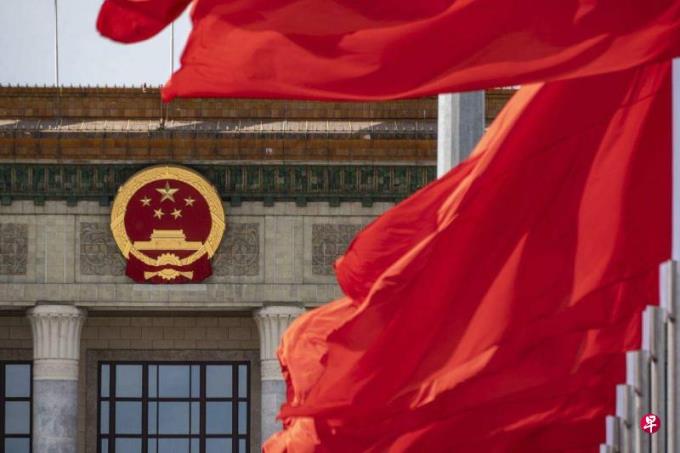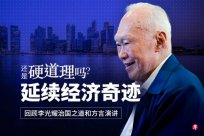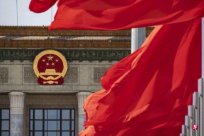
At 10:05 am on Wednesday (October 18), hundreds of photography and cameras were at the opening ceremony of the "Belt and Road" International Cooperation Summit Forum (forum).Foreign leaders entered the venue.The rankings of leaders of various countries have become the focus of the media.
This forum with the tenth anniversary of the "Belt and Road" has achieved a total of 458 achievements. The number far exceeds the two forums, but it is the minimum foreign leader (Head of State).The list organized by the association, in the first forum in 2017, a total of 29 foreign leaders went to China to attend the forum. This number increased to 36 in 2019, and this year it decreased sharply to 23.
Foreign leaders attended or did not attend, and details of the leaders' appearance and seat arrangements reflected the diplomatic considerations and balances of China and the Belt and Road participating countries.
The most noticeable list of the guest list of the forum is that after the International Criminal Court issued a wanted order in March of this year, it first left Russian President Putin, the former Soviet Union.
The attendance of Putin added a little tension to the forum.It is reported that before Putin spoke at the opening ceremony of the forum, some of the parties including former French Prime Minister Jean-Pierre Raffarin followed the participants from Europe and walked out of the venue.
Faced with the high vigilance of the outside world for Sino -Russian relations, China still has a high standard receiving Putin this time.At the opening ceremony of the forum, Putin was also arranged to sit on the right side of the Chinese official as in previous years; in the opening ceremony and the collective photo of the welcome banquet, they also stood beside the Chinese official and near the middle position.
However, when leaders of various countries entered the venue, Putin did not go into the field with the official Chinese officials like the last forum, but entered the middle of the line.This shows that China is cautious to balance the perception of Sino -Russian relations, while maintaining friendly relations with Russia, but also trying to keep some distances on international platforms.
Chinese officials sitting on the right side of the opening ceremony are important strategic partners Putin, and on the left is an important economic partner, Indonesia President Zoko, the President of Southeast Asian country.In 2020, Ya'an replaced the European Union as the largest trading partner in China, and has been the largest trading partner for three consecutive years.
Chinese officials have repeatedly emphasized that in diplomatic work, Asians are put in priority.Zoko's seat arrangement highlights China's attention to Southeast Asia, and also reflects the continued development of the Belt and Road Initiative as its development focus.When Zoko attended the opening ceremony of the forum in 2017, he sat on the right side of the Chinese official, and the two were separated by Putin.
The Belt and Road Initiative has become an important platform for China to promote South -South cooperation and strengthen leadership in developing countries in the past few years.However, the number of global southern countries who attended the forum this year decreased slightly.
Compared with the situation where the Asian Guyan State was present in 2019, there are almost all leaders attending, and this year's forum only has half of the Asianan national leaders attended; in addition to Indonesia, there are Cambodia, Laos, Vietnam, and continuous consecutive years of attendance for three consecutive years.Thailand, Thailand.
The Philippines and Malaysia have sent leaders in the past two forums, but both countries have recently confronted China due to the South China Sea issue.In the past few months, China and the Philippines have launched a tongue and sword with China on the issue of ship supply in the disputed area of South China.
The leaders of other Southeast Asian countries cannot attend, but have nothing to do with the situation in the South China Sea.
After China is open this year, many foreign leaders have visited China; generally, most national leaders will not visit the same country many times in just a few months.Taking Singapore as an example, Xinzhong continued to maintain friendly relations, but Prime Minister Li Xianlong, Deputy Prime Minister and Minister of Finance Huang Xuncai, Dr. Wei Wen, Minister of Foreign Affairs, and Chen Zhensheng, the Minister of Education, in charge of my country's public services, have visited China intensively this year. It is expected that the new and middle -sided cooperation committee meeting will be held.
The Myanmar Military Government is limited by the domestic situation, and it is difficult to send representatives to attend international activities.
The absence of European leaders has also attracted public opinion in the past few months.European risks to China have risen, and the attendance of Putin also made European leaders condemning the Russian and Ukraine War that it would be difficult to attend the forum.Chinese official media refuted in August that the leaders of European countries avoided participating in the Belt and Road International Cooperation Summit Forum, saying that some developed countries were invited by the forum.
At least 10 European leaders have attended the forum in the past two sessions, accounting for about one -third of foreign leaders attended the list.In addition to Putin, this forum is only Hungarian Prime Minister Olban and Serbian President Wugci.The European countries that leaders are absent, including Italy, to withdraw from the Belt and Road.
At present, it is highly concerned about the development prospects of the Belt and Road Initiative.Many analysts believe that the scale of the Belt and Road Initiative may be reduced, and the enthusiasm of some participating countries may decrease.Whether foreign leaders go to China to attend the forum depends on complex factors such as bilateral relations, geopolitical considerations, and uneasiness within the region.It is the superposition of these factors that add complicated uncertainty to the prospects of the Belt and Road Initiative.




